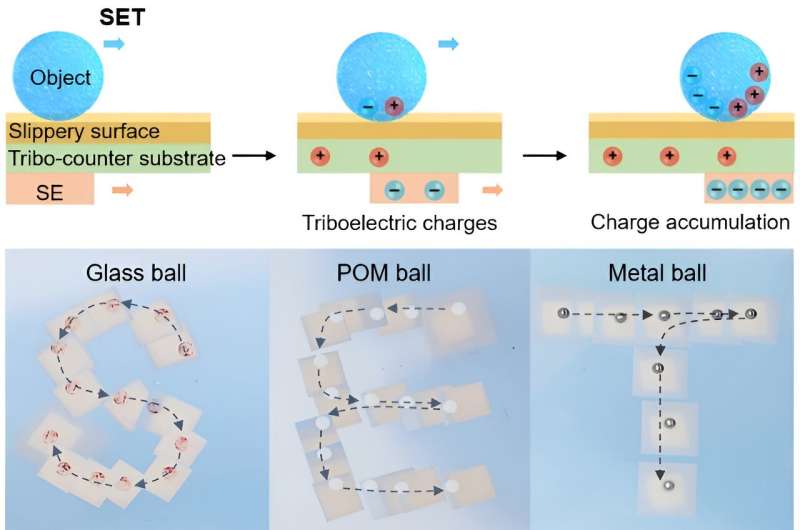This article has been reviewed according to Science X's editorial process and policies. Editors have highlighted the following attributes while ensuring the content's credibility:
fact-checked
peer-reviewed publication
trusted source
proofread
New self-powered electrostatic tweezer enhances object manipulation and microfluidics

In a study published in Device has reported a new self-powered electrostatic tweezer that offers superior accumulation and tunability of triboelectric charges, enabling unprecedented flexibility and adaptability for manipulating objects in various working scenarios. The research team was led by Dr. Du Xuemin from the Shenzhen Institute of Advanced Technology (SIAT) of the Chinese Academy of Sciences
The ability to manipulate objects using physical tweezers is essential in fields such as physics, chemistry, and biology. However, conventional tweezers often require complex electrode arrays and external power sources, have limited charge-generation capabilities, or produce undesirable temperature rises.
The newly proposed self-powered electrostatic tweezer (SET) features a polyvinylidene fluoride trifluoroethylene (P(VDF-TrFE))-based self-powered electrode (SE) that generates large and tunable surface charge density through the triboelectric effect, along with a dielectric substrate that functions as both a tribo-counter material and a supportive platform, and a slippery surface to reduce resistance and biofouling during object manipulation.
Owing to its novel design, the SET can rapidly produce a triboelectric charge density as high as ~40 nC cm-2 in seconds as the SE slides along the tribo-counter substrate. Its robust triboelectric charge production capability exhibited remarkable stability even after 1,000 back-and-forth sliding cycles, and the accumulated high charge density on the SE remained stable for over five hours at room temperature with relative humidity as high as 50%.
"The innovation of the SET lies in the rational design of the P(VDF-TrFE)-based self-powered electrode (SE) with the unique capability of rapid accumulation and facile tunability of the triboelectric charges during sliding triboelectrification, thereby creating a robust driving force on the targeted object," said Dr. Du.
The researchers demonstrated that the SET enables precise manipulation of objects of diverse materials, including bubbles, solid balls, and liquid droplets, with a superior high velocity of 353 mm s-1. Notably, the SET is adaptable to open-to-closed platforms, single-to-multiple objects, and two-dimensional to three-dimensional surfaces, thereby extending its applications to droplet splitting, droplet merging, droplet robots, cell assembly, and pump-free microfluidics.
By eliminating the need for complex electrode arrays, external power sources, and heat production, the SET has the potential to revolutionize tweezers and microfluidics in the next generation of technology.
More information: Cong Liu et al, Self-powered electrostatic tweezer for adaptive object manipulation, Device (2024). DOI: 10.1016/j.device.2024.100465
Journal information: Device
Provided by Chinese Academy of Sciences




















